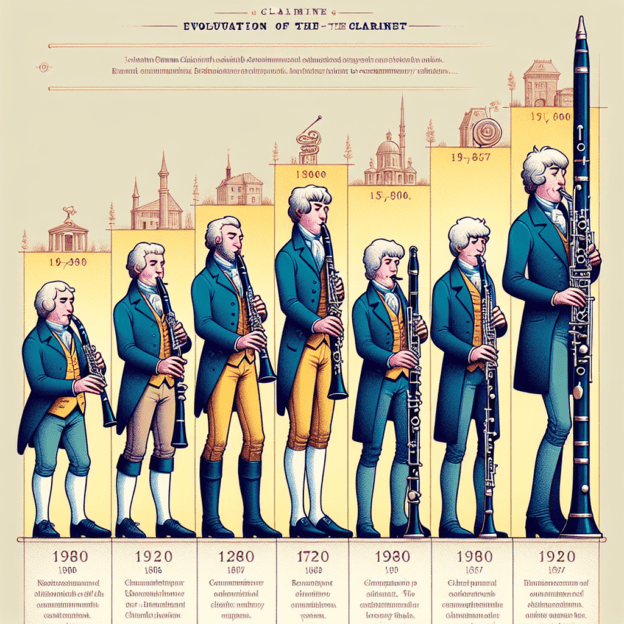The Clarinet's Journey Through Time
The evolution of the clarinet is a fascinating story spanning centuries. From its early beginnings to the polished instruments we see today, the clarinet has undergone remarkable changes. Let's explore this captivating history!
In the past, the clarinet's predecessor was the chalumeau, a single-reed instrument from the late Baroque period. The chalumeau had a limited range and lacked the dynamic versatility of today's clarinet. The instrument's transformation began when Johann Christoph Denner, a German instrument maker, modified the chalumeau by adding a register key around 1700. This breakthrough expanded its range and set the stage for the modern clarinet.
The improvements didn't end there. Throughout the next hundred years, more keys were added, enhancing the instrument's flexibility and ease of play. By the late 18th century, the clarinet had developed a cylindrical bore, setting it apart from other woodwind instruments and providing better control over intonation and sound quality. Can you imagine the depth and richness it added to orchestral and solo performances?
Key Moments in Clarinet Evolution
| Year | Event |
|---|---|
| Late 1600s | Chalumeau in use |
| c. 1700 | Denner adds register key |
| Late 1700s | Cylindrical bore developed |
| 1800s | Boehm system introduced |
19th Century Breakthroughs
The 19th century brought even more significant improvements. The clarinet saw the introduction of the Boehm system, created by Hyacinthe Klose and Louis-Auguste Buffet. This system, which is still used today, includes a series of keys and rings that made fingering more natural and improved the instrument's acoustic qualities. You can picture how excited clarinetists must have been—a whole new realm of musical possibilities opened up before them!
Evolution of Materials
Over time, the materials used in clarinet construction also changed. Initially made from boxwood, modern clarinets are typically crafted from grenadilla wood, known for its durability and warm, resonant sound. Some instruments are even made from synthetic materials, offering resistance to temperature and humidity changes. These materials help players maintain a consistent sound, even in different environmental conditions.
The Clarinet Family
When we think of clarinets, we often picture the Bb and A clarinets used in orchestras, but there are many other members of the clarinet family. The bass clarinet, with its deep, rich tones, is now a common sight in both orchestral and jazz settings. The Eb clarinet, smaller and brighter in tone, is often used in concert bands and chamber music. Each of these instruments plays a unique role and adds significantly to an ensemble's overall sound.
The Art of Clarinet Making
The skill of brands like Martin Freres has been essential in the clarinet's development. Their commitment to quality ensures that players, from beginners to professionals, have dependable instruments that create beautiful sounds. The tradition and innovation in clarinet making continue today, with modern manufacturers always looking for ways to improve the instrument's playability and sound quality.
Evolving Performance Techniques
It's fascinating to see how playing techniques have changed along with the instrument. Early playing styles focused on a narrow but expressive range of tones. Today, clarinetists use a wide variety of techniques, from classical to contemporary, jazz to klezmer—each requiring different articulations and breath control. Advanced techniques like multiponics, circular breathing, and glissandos have become part of the modern clarinetist's toolkit.
Looking to the Future
The clarinet's story is far from over. As technology progresses, we may see even more innovations. Digital enhancements and new materials could lead to further improvements in sound quality and ease of play. The possibilities are exciting to consider!
A Legacy of Innovation
The evolution of the clarinet is a tale of ongoing innovation and adaptation. From the chalumeau to today's sophisticated instruments, each change reflects the creativity and needs of musicians throughout history. For all clarinet enthusiasts, whether you're just beginning or have years of experience, understanding this history deepens your appreciation for this remarkable instrument.
The next time you hold your clarinet, think about its incredible journey—one filled with passion, ingenuity, and music that spans generations. Who knows? You might be part of its next exciting chapter!







